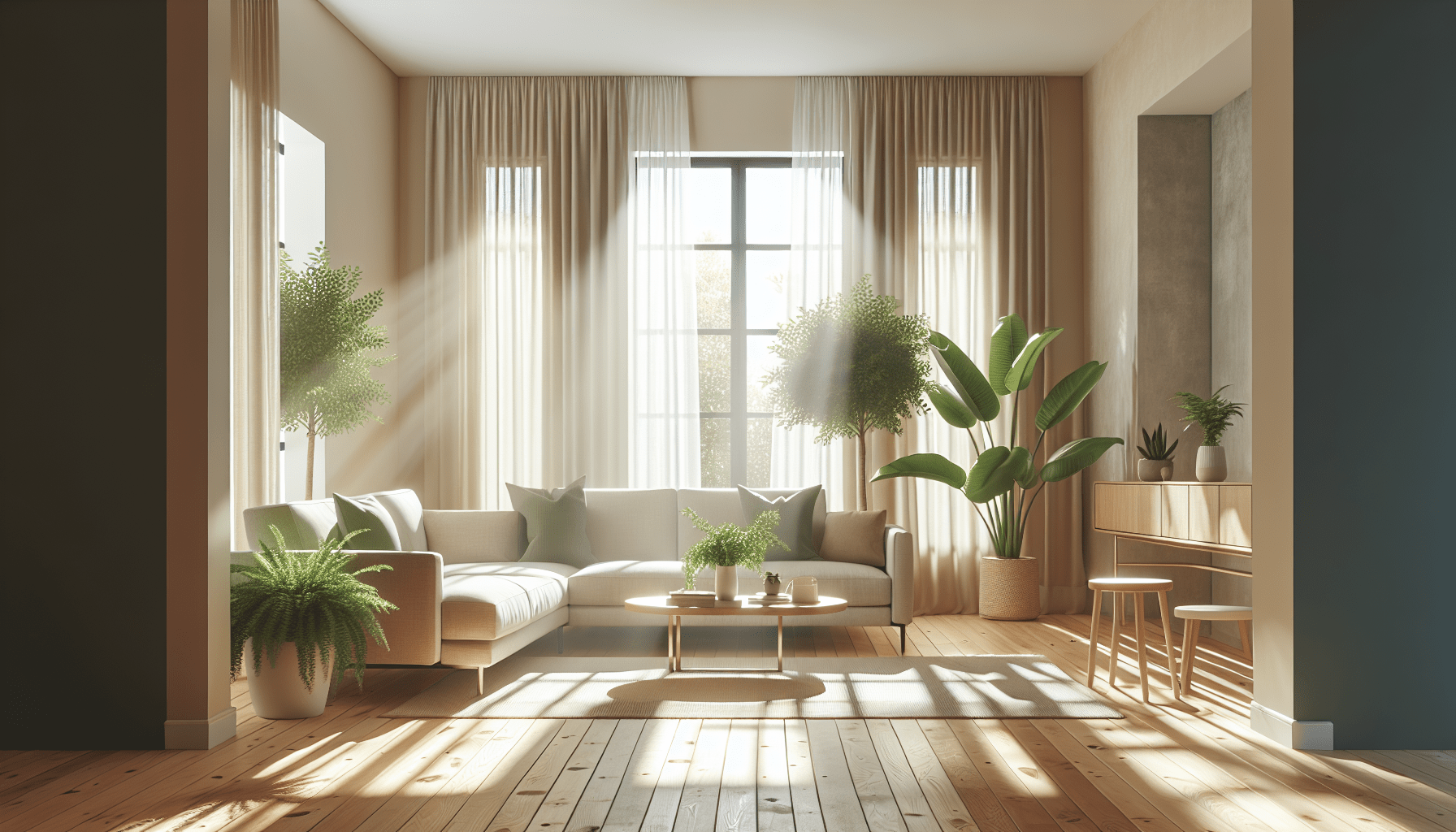Creating an allergen-free environment doesn’t have to be daunting. In “Creating an Allergy-Friendly Living Space: A Beginner’s Guide,” you’ll discover simple, practical steps to transform your home into a sanctuary of fresh, clean air. Whether it’s choosing hypoallergenic materials, implementing air purifiers, or establishing regular cleaning routines, this guide walks you through everything you need to know. If you’re ready to breathe easier and enjoy a healthier home, this beginner’s guide is here to help every step of the way. Have you ever considered the impact your living space has on your allergies? You might be surprised to learn that your home can harbor allergens that trigger sneezing, coughing, and itchy eyes. Creating an allergy-friendly living space isn’t just about comfort; it’s about your well-being. Let’s explore how you can transform your home into a sanctuary free from allergens.
Creating an Allergy-Friendly Living Space: A Beginner’s Guide

Understanding Allergens in Your Home
In this section, we will delve into the basics of what allergens are and how they can affect you in the comfort of your own home.
What Are Allergens?
Allergens are substances that can cause allergic reactions. These reactions may range from mild discomfort to severe health issues. Common indoor allergens include dust mites, pet dander, mold spores, and pollen.
How Do Allergens Enter Your Home?
Allergens can be brought into your home in many ways. They can hitchhike on your shoes, float in through open windows, or even come in on your pets. Understanding how they enter your home is the first step to controlling them.
Steps to Create an Allergy-Friendly Living Space
Creating an allergy-friendly home involves more than just cleaning up; it’s about creating an environment where allergens struggle to thrive. Let’s break it down room by room to make it easier to manage.
Living Room
Your living room is where you spend a significant amount of time, so ensuring it is free from allergens is crucial.
Flooring
Carpets can trap numerous allergens, so consider replacing them with hardwood or tile flooring. If you must have carpet, choose low-pile options and vacuum frequently.
- Hardwood: Naturally resistant to dust mites.
- Tile: Easy to clean and allergen-resistant.
- Low-Pile Carpet: Easier to maintain and less likely to trap allergens.
| Flooring Type | Maintenance Tips |
|---|---|
| Hardwood | Regular sweeping and mopping |
| Tile | Use a mild cleanser and disinfectant |
| Low-Pile Carpet | Vacuum with a HEPA filter regularly |
Furniture
Opt for leather or vinyl furniture instead of upholstered pieces. If you prefer upholstery, look for materials that are tightly woven to prevent dust from settling in.
| Furniture Material | Benefits | Maintenance Tips |
|---|---|---|
| Leather/Vinyl | Non-porous, less allergen build-up | Wipe down with a damp cloth regularly |
| Tightly Woven Fabric | Prevents dust from settling | Use a vacuum with upholstery attachment |
Air Quality
Maintaining good air quality in your living room can significantly reduce allergens. Use air purifiers with HEPA filters and consider houseplants that can purify the air.
| Equipment | Benefits | Maintenance Tips |
|---|---|---|
| HEPA Air Purifier | Captures airborne allergens | Replace filters according to manufacturer instructions |
| Houseplants | Purifies air naturally | Avoid overwatering to prevent mold growth |
Bedroom
Since you spend about one-third of your life in your bedroom, keeping this space allergen-free is vital for a good night’s sleep.
Bedding
Choose hypoallergenic mattresses and pillows, and use dust-mite-proof covers.
| Bedding Item | Recommendation | Maintenance Tips |
|---|---|---|
| Mattress | Hypoallergenic material | Use a washable mattress cover |
| Pillows | Hypoallergenic or synthetic fill | Wash pillowcases weekly in hot water |
| Dust-Mite Covers | For mattresses and pillows | Ensure they are zippered and fit snugly |
Cleaning Habits
Regularly washing bedding and vacuuming floors will go a long way in maintaining a low-allergen environment.
| Cleaning Task | Frequency |
|---|---|
| Wash Bedding | Once a week |
| Vacuum Floors | Once a week (use HEPA filter) |
Kitchen
The kitchen can be a hotspot for mold and pests that contribute to allergies.
Ventilation
Proper ventilation can prevent mold growth. Always use exhaust fans while cooking.
| Equipment | Benefits | Maintenance Tips |
|---|---|---|
| Exhaust Fan | Reduces moisture and pollutants | Clean the fan regularly |
| Dehumidifier | Keeps humidity levels in check | Empty water collection tank frequently |
Storage
Store food in airtight containers to prevent pests and mold.
| Storage Solution | Benefits |
|---|---|
| Airtight Containers | Prevents mold and pests |
Cleaning
Keep your kitchen clean to avoid attracting pests. Wipe down surfaces and clean out the fridge regularly.
| Cleaning Task | Frequency |
|---|---|
| Clean Surfaces | Daily |
| Clean Fridge | Once a week |
Bathroom
The bathroom is another prime location for mold due to its high moisture levels.
Ventilation
Good ventilation is crucial. Make sure to run the exhaust fan during and after showers.
| Equipment | Benefits | Maintenance Tips |
|---|---|---|
| Exhaust Fan | Reduces moisture build-up | Clean fan vents regularly |
| Dehumidifier | Keeps humidity in check | Ensure it is emptied and cleaned regularly |
Mold Prevention
Using mold-resistant paint and regularly cleaning shower curtains and tiles can keep mold at bay.
| Prevention Method | Maintenance Tips |
|---|---|
| Mold-Resistant Paint | Repaint every few years for efficacy |
| Clean Shower Curtain | Wash regularly |
Pet Care
If you have pets, their dander can be a significant source of allergens. Proper pet care can help mitigate this issue.
Grooming
Regular grooming and baths can reduce the amount of dander your pets spread around the house.
| Grooming Task | Frequency |
|---|---|
| Bathing | Once a month or as needed |
| Brushing | Weekly, ideally in an outdoor setting |
Cleaning
Regular cleaning of pet bedding and areas where they spend a lot of time is essential.
| Cleaning Task | Frequency |
|---|---|
| Wash Pet Bedding | Weekly |
| Clean Pet Areas | Weekly |
Additional Tips for an Allergy-Free Home
Here are some additional tips to help you maintain an allergy-friendly living space.
Choosing the Right Household Products
Select cleaning products that are free from harsh chemicals. Natural cleaning products or those labeled as hypoallergenic are great choices.
| Product Type | Recommendation |
|---|---|
| Cleaning Supplies | Natural or hypoallergenic |
Controlling Humidity Levels
High humidity levels can encourage mold and dust mites. Keep your home’s humidity below 50% by using dehumidifiers and proper ventilation.
| Method | Maintenance Tips |
|---|---|
| Dehumidifier | Regularly empty and clean water collection tank |
Regular Maintenance
Regular home maintenance can prevent allergies. Change air filters, clean vents, and service HVAC systems regularly.
| Task | Frequency |
|---|---|
| Change Air Filters | Every 3 months or as recommended by the manufacturer |
| Clean Vents | Annually |
| Service HVAC Systems | Annually or as needed |
Conclusion
Creating an allergy-friendly living space might seem like a daunting task, but by breaking it down into manageable steps, you can make your home a more comfortable and healthier place to live. Start by understanding where allergens come from and focus on cleaning and organizing each room. Regular maintenance and the right products can make a huge difference. So, here’s to breathing easier and enjoying your home to the fullest!
By following these steps and making mindful choices, you’re well on your way to creating an allergy-friendly sanctuary. Your body will thank you for it!

